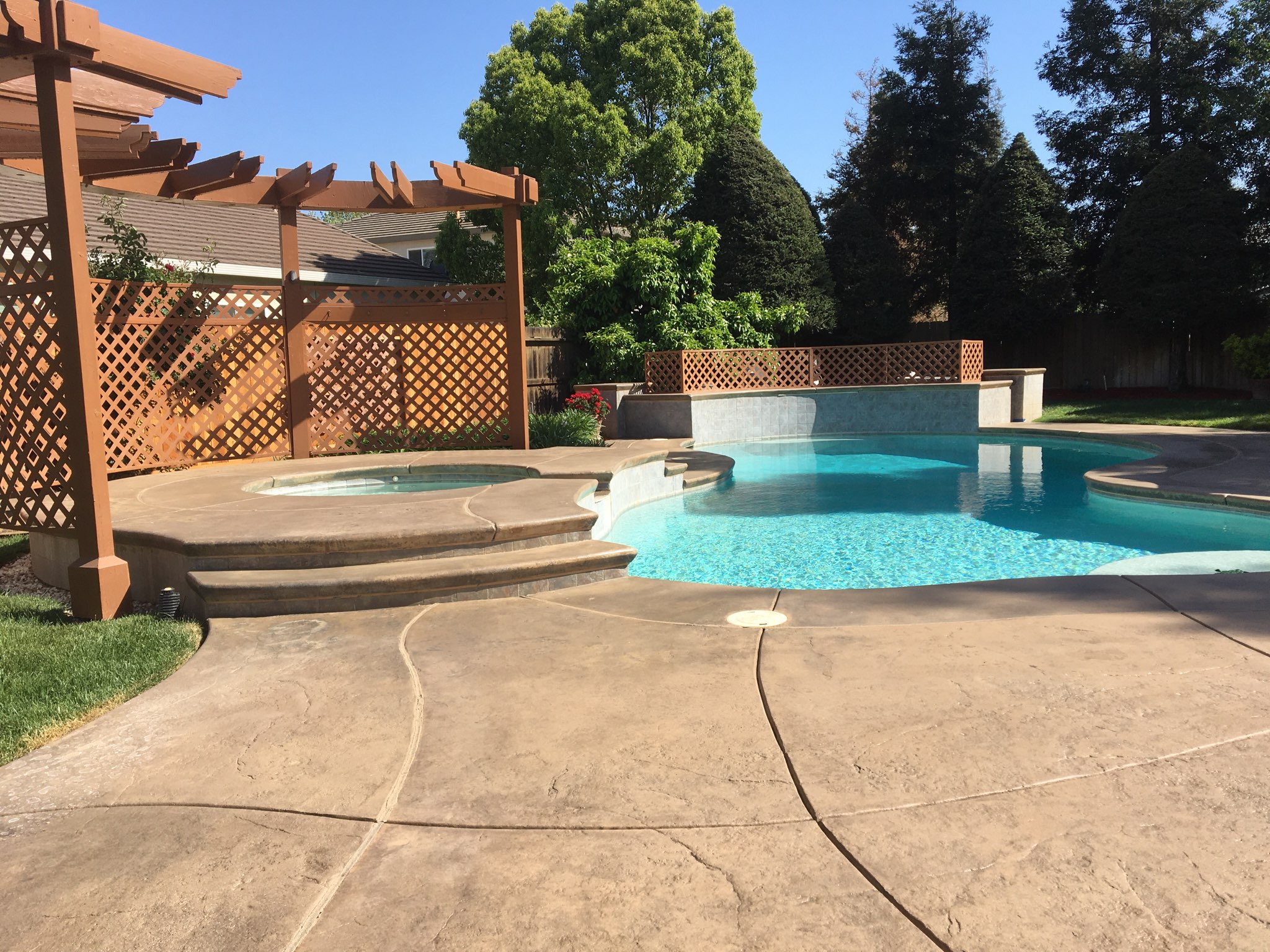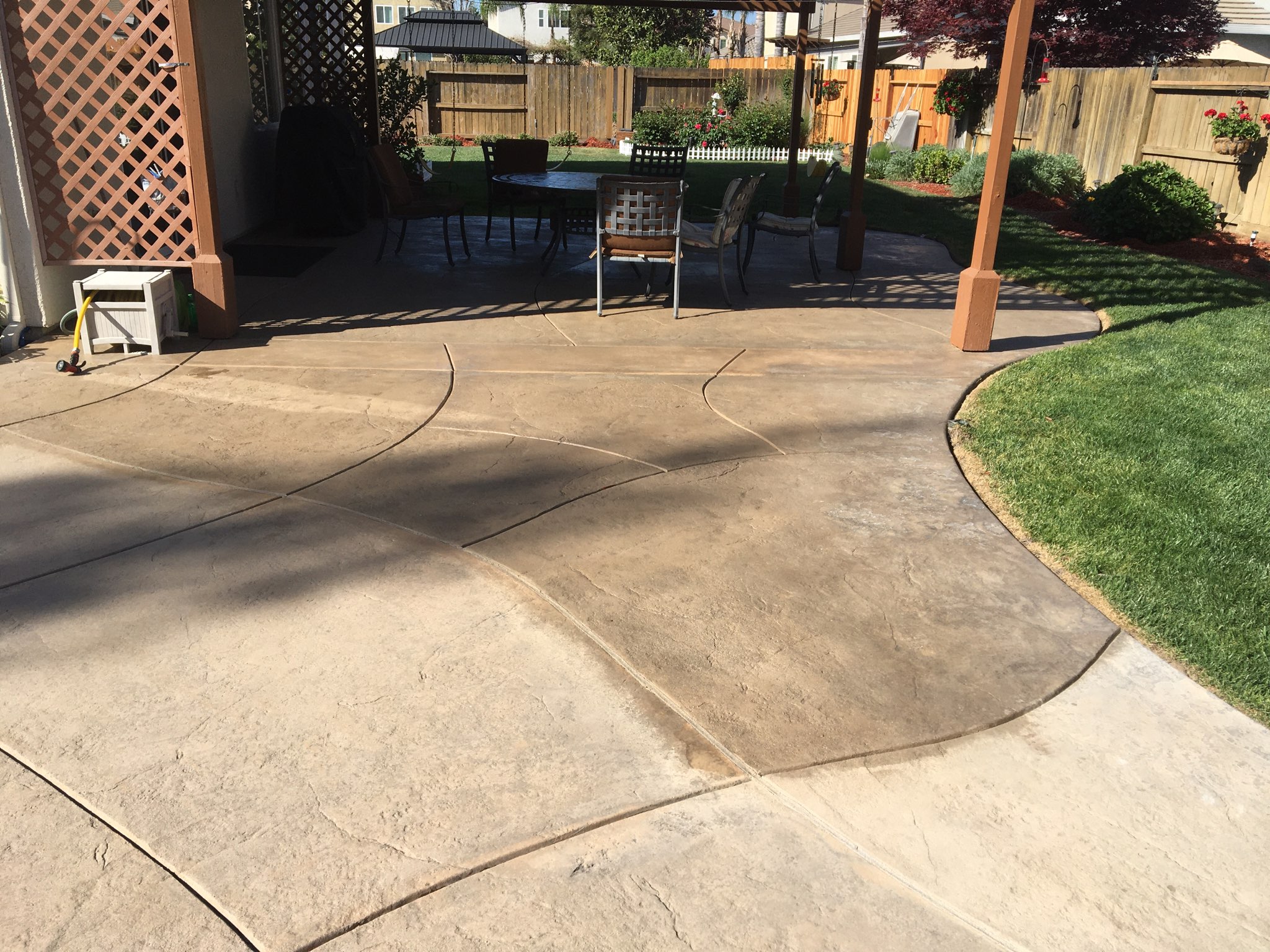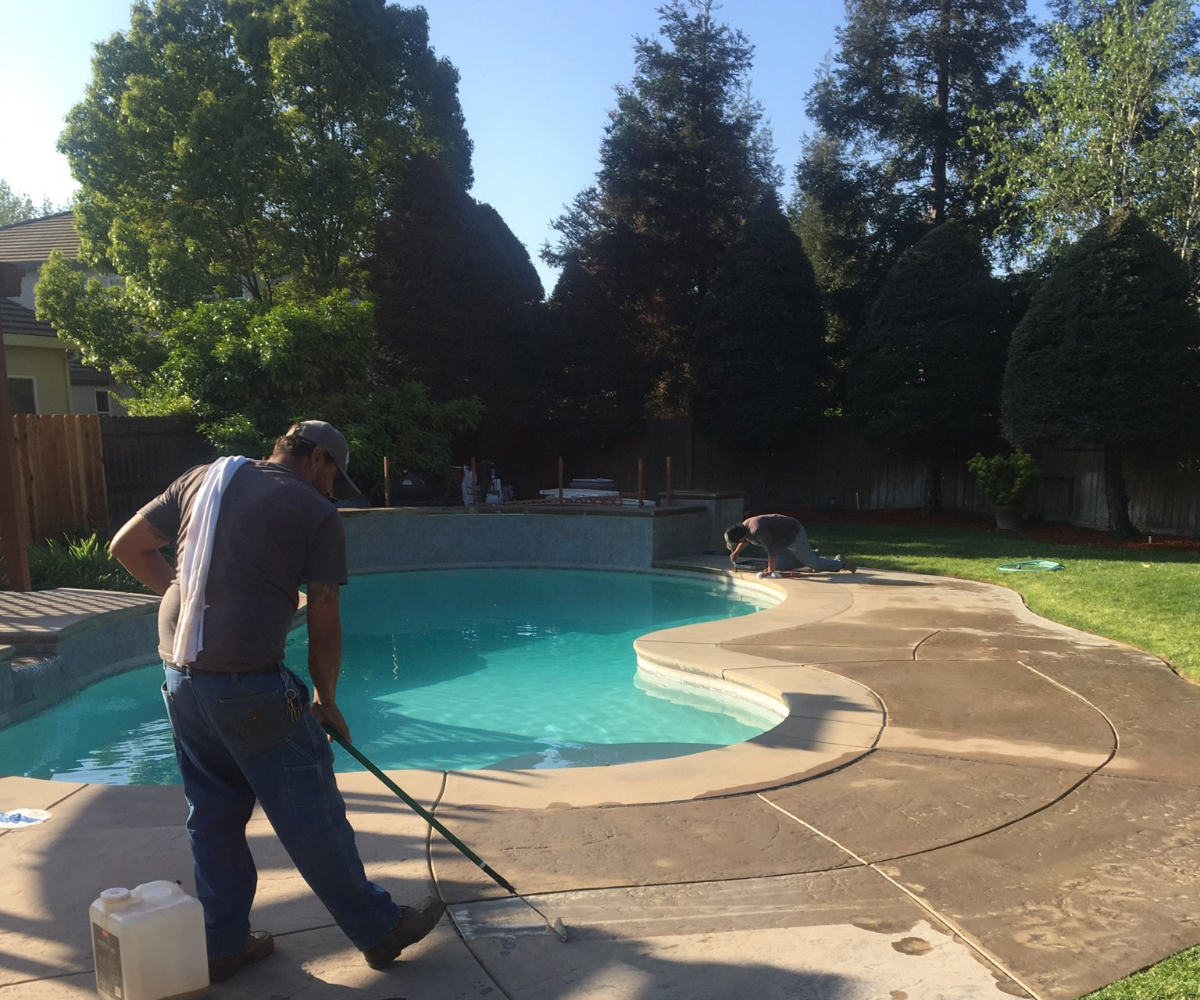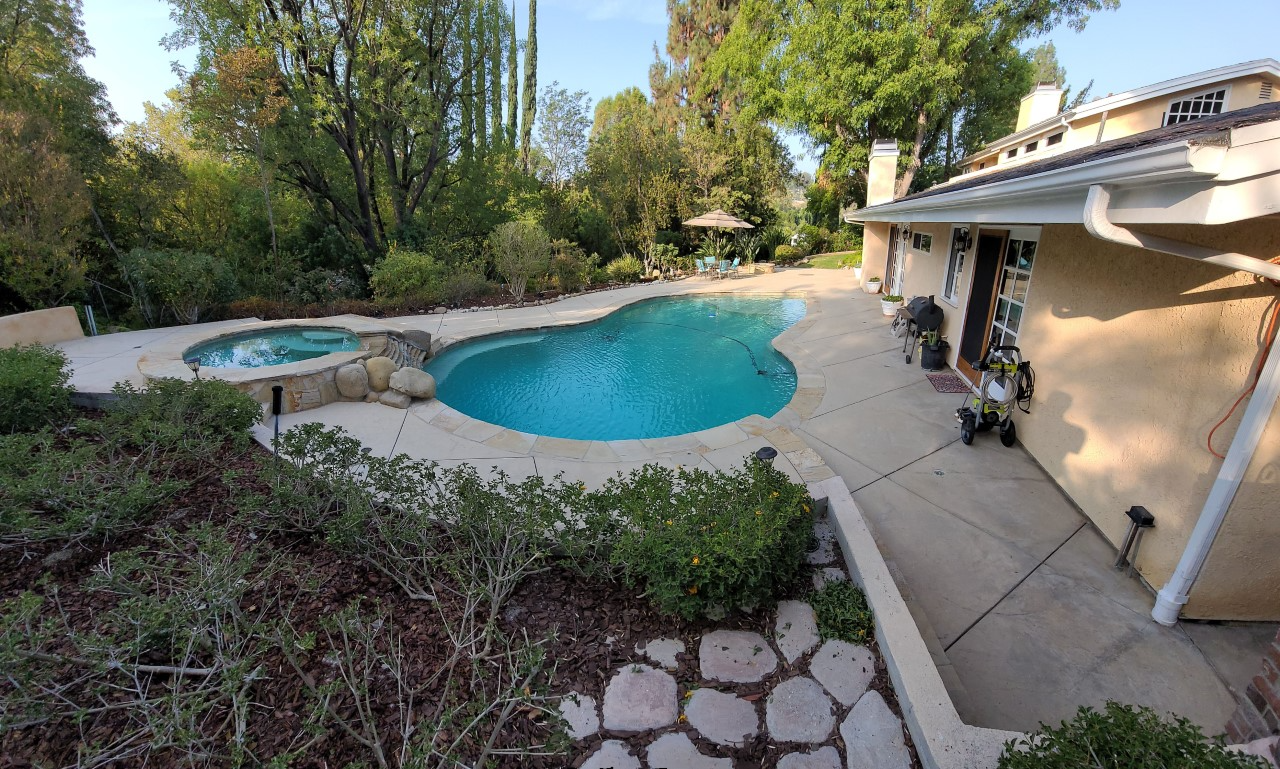Sealing Concrete Pool Decks
When you choose the proper concrete stealer for a pool deck resurfacing (or even a brand new pour), you’re providing incredible-looking colored concrete that stands up to direct weather exposure and won’t fade over time.

It’s easy to see why concrete patios and pool decks are a favorite among homeowners. They’re a peaceful place of leisure, meant for kicking back and unwinding. Plus, with an inviting and well-maintained outdoor living space, you can double the livable square footage of your home.
Concrete pool decks certainly have their perks, being all-season and low-maintenance. As with any element of your home, seasonal checks help ensure proper upkeep. Yet, if a good quality concrete sealer is properly applied, you can go years without ever worrying about maintenance.
What is the best concrete sealer for pool decks?
EasySeal acrylic concrete sealer in satin finish is our recommended choice for concrete pool decks. It works great in conjunction with concrete stain and is a safe, non-slip surface choice for most concrete pool decks. For added safety, add a non slip concrete sealer additive to the top coat sealer.

How often should you seal a concrete pool deck?
Depending on weather exposure, a professional grade concrete sealer lasts about two to three years before re-application is needed.

Fading concrete color is the #1 issue homeowners run into with a stamped concrete pool deck. When properly installed, even the best-looking colored concrete will fade over years of direct weather exposure if not properly maintained.

Most concrete surfaces found around the pool area are textured or stamped concrete that has been integrally colored and then topped with a concrete stain on its surface (or sealed directly).
Over time, especially if the concrete goes without maintenance in extreme weather conditions, the sealer may begin to break down and the concrete will lose a bit of its topical color. However, with proper initial sealing and adequate scheduled maintenance, both your integral color and topical acid stain will not fade or peel.
To establish the condition of your concrete patio or pool deck, simply pour a large glass of water on it. This is the first step a professional concrete designer will take to evaluate the state of the sealer.
Keep in mind that it is important to know what kind of concrete sealer was originally used if possible. To avoid an undesirable chemical reaction, solvent-based sealers should be resealed using a solvent-based sealer, and the same goes for water-based sealers.
If your concrete was sealed with polyurethane, the entire surface must be scuffed before another coat of polyurethane can be applied. If you attempt to re-coat without sanding first, the new sealer will peel right off the concrete. No fun!
What is the easiest way to stain a stamped concrete pool deck?
The easiest way to renew outdoor concrete color is using Direct Colors Antiquing Stain.
The color flows into the low parts of the stamp impression and adds natural-looking highlights that our DIYers love. Concrete antiquing stain is easy to maintain and also works fabulously on broomed or smooth concrete, resulting in a rich, solid color appearance.
Our Antiquing Stain should always be sprayed from a pump sprayer. The key to success with this product is to shake it well before pouring it from the container, and to continue to shake it periodically during application – thus ensuring the product remains in solution at all times. The application hereafter is simple. All you have to do is spray even coats that saturate the concrete until the desired color is achieved!
How long does concrete color last?
Maintenance will determine how long the color on your pool deck lasts. At Direct Colors, we want to make maintenance as effortless as possible for homeowners, so our concrete Antiquing Stain is fast-acting and easy to use. Once the concrete is clean and dry, you spray down the product and allow it to dry for 6-8 hours before sealing. There’s no additional cleaning or rinsing in between. Yes, really – that’s it!
With homeownership, it’s rare to get DIY projects completed so quickly— though using Antiquing Stain sometimes feels more like routine yard maintenance than concrete work. We can’t get enough of the color options, too!

What happens if I don’t seal stamped concrete?
If you don’t seal stamped concrete, your concrete color will eventually fade over time and need refreshing. Doing so will likely be more expensive than the cost of concrete sealing.
Sometimes we meet folks who never liked their concrete colors in the first place and let their concrete fall into disrepair.


Are there any exceptions to applying concrete antiquing stain?
Yes, concrete stamped and accented with powdered release at the time of installation can sometimes become a problem a few years down the line, especially if left unsealed for a while. The powdered release (usually darker than the concrete itself) flakes away, leaving behind an unsightly speckled pattern. Unfortunately, repairing the damage using an antique stain is sometimes only a temporary fix, and the problem often continues.

So what can be done? First, powerwash the concrete to remove as much of the loose colorant as possible. Sand those areas where significant color loss has occurred to prevent more damage and apply the Antiquing Stain to the dry, clean concrete. Properly preparing the concrete before application and sealing with a high-quality concrete sealer will reduce the risk of future damage.
Good luck on your next concrete DIY project!





